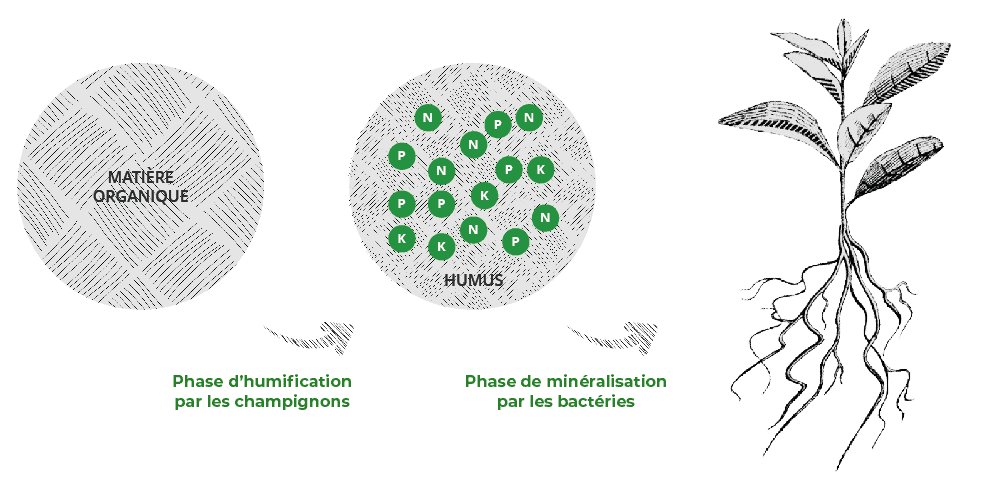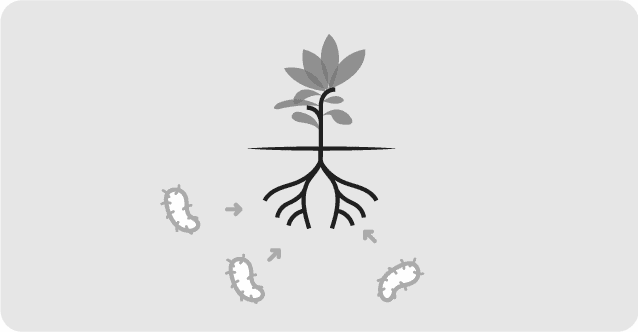
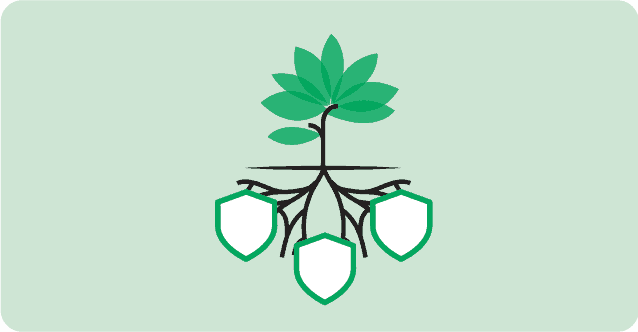
Factors influencing root system resistance to pathogen attack
Because the roots are hidden beneath the soil surface, it is often forgotten that they contribute the most to high yields. There are different types of root systems. The 2 main root systems are the taproot and the fibrous or papillary root systems. The stake root system is particularly common in dicotyledons and gymnosperms. It is characterised by a primary root that sinks vertically into the ground and on which lateral secondary roots grow. This allows particularly effective anchoring for soil decompression. A taproot can also be tubered: radish, carrot, beetroot, potato. The fibrous root system is found in many monocot plants . Here the roots all start from the same point and there is no dominance of a main root .The roots appear from a disc. Examples are grasses, corn, wheat, tomato, etc.
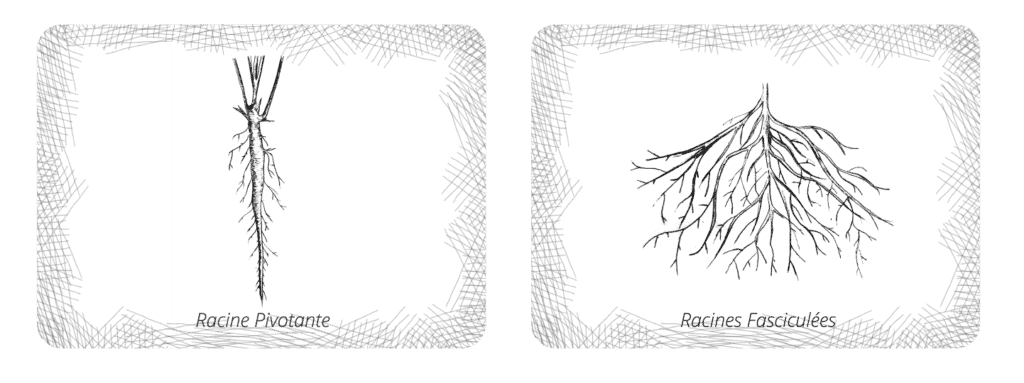
Pathogens such as fungi and nematodes damage the roots and reduce their ability to effectively take up fertiliser, leaving more space for the leaves above the soil to take advantage of the weeds. Environmental factors such as excess water, very compact soil texture or even frost can trigger attacks by pathogenic organisms on the roots. When they affect crop plants, diseases can have serious economic consequences. This is for example the case of peas due to the pathogenic fungus Aphanomyces Euteiches which causes significant root damage.
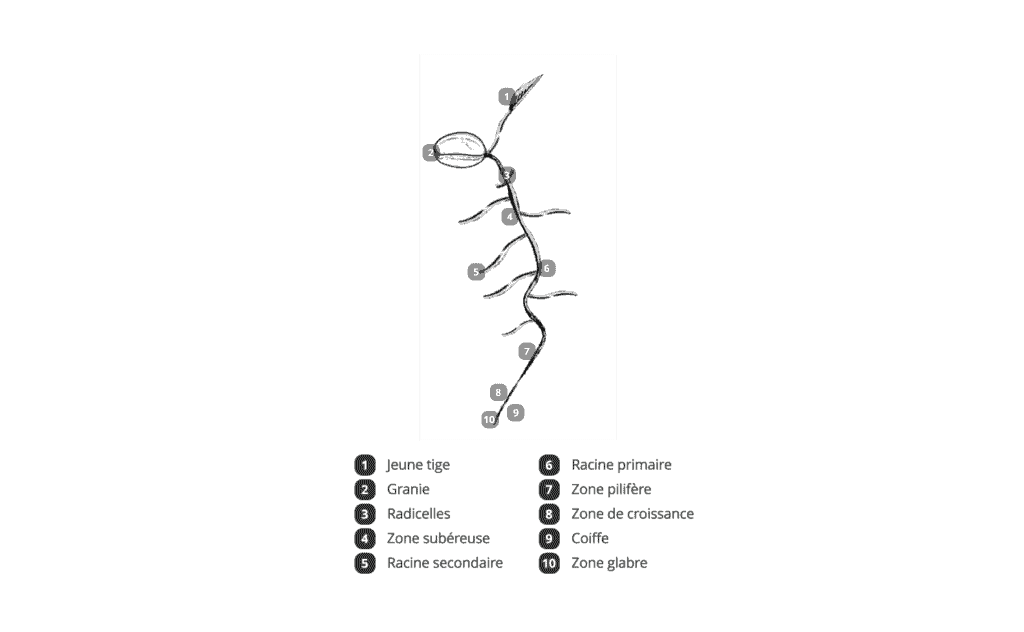
Anchoring to the soil and nourishment are not the only functions of roots! The defence mechanisms put in place by these organs, particularly in the root cap region, have long been ignored, and have led to numerous studies over the last ten years. In normal growth, the root cap with the apical meristem is a vulnerable zone, as the conducting vessels there are not yet mature (not yet fattened) and therefore more permeable to vascular pathogens that can use this gateway to colonise the rest of the plant. This latter therefore puts in place various mechanisms to protect this area.
The peripheral cells, on their own, form a “tissue” consisting of cells isolated from each other which are all together contained in a thick mucus. In addition to mechanical protection, they also actively intervene in defence by secreting low molecular weight compounds, phytoantibiotics, which act as a chemical barrier against a wide range of aggressive agents (bacteria, insects, nematodes, fungi). When the plant is attacked, it will strengthen its defences by increasing the production of phytoantisipines and synthesising other low molecular weight antimicrobial compounds called phytoalexins. Among the defensive secretions, phenolic compounds and terpenoids, in particular, have high antibacterial and antifungal capacity.
As a result of the exfoliation of the cap, these cells undergo significant modification in the expression of their genes and begin to secrete repellent, inhibitory or biocidal compounds. Phytohormones such as auxins and cytokinins are then activated to regenerate plant cells that have been depleted by these defence mechanisms. Phytohormones are naturally present in plants in quantities of the order of micrograms per litre. Auxins are responsible for:
- Cell elongation.
- Stimulation of mitosis (cell division of a parent cell into two daughter cells).
- Rooting (root formation). Auxin has a strong rooting power, when a root fragment is placed in a medium containing auxin, the appearance of lateral roots can be observed.
Cytokinins: Produced mainly in the roots, they circulate throughout the plant via the raw sap through the xylem. They complement the action of auxin in cell elongation by acting in organs where the latter does not act (mainly the tuber). Depending on their respective concentrations, the simultaneous use of auxin and cytokinin will produce different responses:
- If the ratio of auxin/cytokinin is high, the formation of radicals is favoured.
- If the ratio of auxin/cytokinin is low, bud formation is favoured.
It is recommended that you visit his plots as soon as the young plants start to emerge from the ground and then every week for a month. Place the washed young plants on a white paper towel and wipe off the excess water with another paper towel. Generally, healthy roots are white and well developed with secondary roots and rhizomes. The diseased roots may show spots or brown patches. Sometimes they are cut and the tip is dark brown. You should also notice the neck where in some cases, the disease is found there. There is a wide variety of symptoms. In the case of cereals, it may be possible to determine the origin of the infection, either from the soil or from the seed. When the rhizome (the part that comes out of the seed and goes up the neck) or the seed roots (the first roots that come out of the seed) turn brown or rot, the pathogenic fungus is most likely to come from the seed. When the root tips are brown and rotten and the parts near the seed are healthy, then one can suspect a pathogenic soil-borne infection. Here are some obvious signs of pathogen attacks:
- The plants are dead and show no foliar lesions.
- The base of the plants shows yellowed leaves.
- The presence of smaller or pale green plants per area in the field.
Here are some subtle signs of pathogen attacks:
- Vegetation is slow or non-existent.
- The plants seem to lack fertilizer or water.
Very dry sowing conditions followed by colder temperatures and heavy rainfall that favour excess water in the fields favour Pythium infections. The latter detect the roots that begin to emerge from the seeds and attack them quickly. During hot and dry springs, cereals sown in light or sandy soils are more susceptible to infestation by Fusarium present in the seeds and soil. The roots may show brown lesions or be completely rotten.
Based on this principle, Terrabiotec products for soil application such as :
- granular Terra Mineral, Terra Crop, Terra Myco etc,
- the Terra Mineral microgranules,
- the water-soluble Terra First and Terra Myco
- as well as the liquids Terra Flow
contain (as one of the 6 technologies) technology that promotes the production of autoalexins, phytoantibodies and also with their content of auxins and cytokinins with the main objective of rapid regeneration of the root system from pathogen attacks, thus increasing the ability to absorb nutrients and creating the conditions for healthy and strong plants, compared to common fertilisers.

